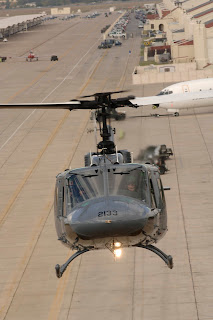Good news: instruments have come to an end. I passed my checkride today, just in time for the holiday break. So what comes next? Now things start to get exciting.
Gone are the days of flying at a couple thousand feet and landing on a prepared runway. Now, we start flying 100 feet above the trees and landing in farmer Joe's field. Shortly thereafter, we do this with another helicopter a couple hundred feet away (in formation). Welcome to the tactical phase of training.
I won't be starting tactical training until the new year. So for now, it's time for a much needed break! In the meantime here's a video to watch. It doesn't have much to do with what I'll be doing as a student, but it's pretty cool.







































